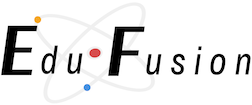The ubiquitous nature of social media in today’s society has driven interest in identifying opportunities for their use in higher education with an eye toward their effectiveness at improving learning outcomes. Commonly referred to as Web 2.0 technologies, platforms such as Facebook, X (formerly Twitter), Wiki’s, and blogs have taken center stage in the quest to facilitate more effective learning in both traditional and online classroom environments.
A microblogging service available through traditional computers and mobile devices connected to the Internet, X allows users to collaborate by sending short messages (up to 280 characters) that can include links to various multimedia such as videos and images. Messages can be broadcast to a large number of groups or directed to individuals and can be organized by topic using searchable hashtags. What’s more, X offers opportunities to connect to others around a wide variety of professions and engage with industry experts on specific, industry-related topics and issues. Hence, communication and collaboration serve as X’s foundational value and from that comes educators’ interest in leveraging this popular Web 2.0 technology to drive improved learning outcomes.
A consideration of X’s challenges and advantages is first in order. Mercer and Winger (2017) point to a lack of faculty and student proficiency with using X, short duration of online courses, inconsistent usage and implementation, and student privacy and confidentiality concerns as potential barriers to X’s efficacy as a learning tool. Given the potential for misuse or overuse of X, there is also the danger that it could, in fact, serve as more of a distraction than an aid to learning (Rinaldo, Tapp, & Laverie, 2011). Additionally, there can be a logistical challenge in the fact that some students might not possess the necessary equipment, such as a mobile device, to use X even though we’ve come to expect that all adults own smartphones (Hsu, & Ching, 2012).
For all of these challenges, X offers counterbalancing strengths asserting its potential and the literature holds no shortage of positive findings for the use of X in the online classroom. For one, even though the character limitation for tweets recently increased from 140 to 280 total characters, this format is still conducive to helping students learn how to succinctly compose their ideas to effectively communicate them in a concise manner, an important foundational thinking and writing skill that is valuable across all courses and disciplines.
From the perspective of traditional educational goals, Rinaldo et al. (2011) proffer it as a good tool for engaging students in experiential learning and one study found that students were better able to “understand and engage with course material by connecting concepts and theories discussed in class to real-world examples that they learned about” on X (West, Moore, & Barry, 2015, p. 161). Not only are students able to co-construct knowledge in authentic contexts through exchanging messages (Hsu, & Ching, 2012), they also benefit from a “pleasant and motivating learning environment” of rapid information exchange that can be created using X (Ricoy, & Feliz, 2016, p. 245).
Traditional goals aside, the emergence of learning communities as a key component in higher education makes X’s capability to facilitate these types of connections particularly valuable with Luo, Shah, and Cromptom (2018) pointing to its ability to increase interactivity along with engagement. Indeed, I have observed that learning is accelerated when social elements like X are factored into course design and implementation. Lastly, more and more organizations are adopting X, among other Web 2.0 platforms, for use in achieving greater knowledge-sharing to help employees perform their roles more effectively. Exposing students to tools like these helps prepare them to meet professional expectations such as this in their future careers.
Connecting students and organizing them around relevant information nuclei undoubtedly offers great potential to educators. That said, there are challenges and concerns to be mitigated. At any rate, X is worth a look and this leads me to the “How?” of the matter. Check back next month as I continue my exploration of X as a learning tool with an eye toward specific applications and additional considerations. Email me at the link below, or post a comment anytime with your thoughts on, or experiences with, using X as a learning tool in your online classroom.
References
Mercer, B., & Winger, A. (2017). Investigating twitter use in lower division online classrooms.Distance Learning, 14(2), 1-8.
Rinaldo, S. B., Tapp, S., & Laverie, D. A. (2011). Learning by tweeting: Using twitter as a pedagogical tool.Journal of Marketing Education, 33(2), 193-203. doi:10.1177/0273475311410852.
Hsu, Y., & Ching, Y. (2012). Mobile microblogging: Using twitter and mobile devices in an online course to promote learning in authentic contexts.The International Review of Research in Open and Distributed Learning, 13(4), 211. doi:10.19173/irrodl.v13i4.1222.
West, B., Moore, H., & Barry, B. (2015). Beyond the tweet: Using twitter to enhance engagement, learning, and success among first-year students.Journal of Marketing Education, 37(3), 160-170. doi:10.1177/0273475315586061.
Ricoy, M., & Feliz, T. (2016). Twitter as a learning community in higher education.Journal of Educational Technology & Society, 19(1), 237-248.
Luo, T., Shah, S. J., & Cromptom, H. (2018). Using twitter to support reflective learning in an asynchronous online course.Australasian Journal of Educational Technology, doi:10.14742/ajet.4124.

